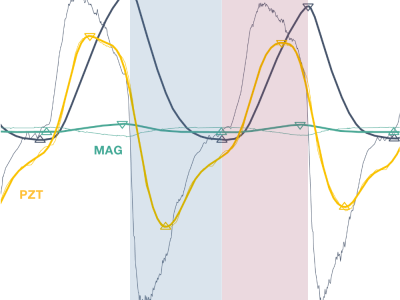Biophysiological Signals

The dataset encompasses the recordings of 10 participants over 3 separate sessions in the simulated flight experiment paradigm. The experiment aims to elicit the pilots' cognitive collapse state and to early warn of the tipping points, for details you can refer to the paper "An Early Warning Approach for Pilots’ Cognitive Tipping Points Based Multi-modal Signals". The dataset includes EEG, eye movement, task performance data, and experimenter's recording. It has a total of 30 trials and is approximately 4.7G in size.EEG signal.
- Categories:
 137 Views
137 Views
This dataset protocol details the acquisition of a surface electromyography (sEMG) dataset from the Tibialis Anterior (TA) and Gastrocnemius Lateralis (GL) muscles of 20 healthy adults, with an equal distribution of 10 male and 10 female participants. The data was collected using the Delsys Trigno wireless EMG system during a 30-second walking session. Proper electrode placement on the specified muscles was ensured for accurate signal capture. Ethical considerations were addressed, with approval from the Institutional Review Board and informed consent from participants.
- Categories:
 423 Views
423 Views
Blood pressure (BP) measurement is an indispensable parameter for diagnosing many diseases, e.g., heart attack, stroke, vascular disease, and kidney disease. All these disease sometimes lead to fatal injuries due to the failure of vital human organs. The measurement of BP using BP device has several inaccuracies due to the non-availability of SI traceable calibration systems, which can also meet the criteria of International Organization of Legal Metrology (OIML) particularly OIML R 148 and OIML R 149 guidelines.
- Categories:
 132 Views
132 Views
Wearable and low power devices are vulnerable to side-channel attacks, which can retrieve private data (like sensitive data or the private key of a cryptographic algorithm) based on externally measured magnitudes, like power consumption. These attacks have a high dependence on the data being encrypted -- the more variable it is, the more information an attacker will have for performing it. This database contains ECG data measured with a wearable sensorized garment during different levels of activity.
- Categories:
 373 Views
373 ViewsDataset for validation of a new magnetic field-based wearable breathing sensor (MAG), which uses the movement of the chest wall as a surrogate measure of respiratory activity. Based on the principle of variation in magnetic field strength with the distance from the source, this system explores Hall effect sensing, paired with a permanent magnet, embedded in a chest strap.
- Categories:
 528 Views
528 ViewsDataset for validation of a new magnetic field-based wearable breathing sensor (MAG), which uses the movement of the chest wall as a surrogate measure of respiratory activity. Based on the principle of variation in magnetic field strength with the distance from the source, this system explores Hall effect sensing, paired with a permanent magnet, embedded in a chest strap.
- Categories:
 146 Views
146 Views
A new design and implementation of a control system for an anthropomorphic robotic hand has been developed for the Bioinformatics and Autonomous Learning Laboratory (BALL) at ESPOL. Myoelectric signals were acquired using a bioelectric data acquisition board (CYTON BOARD) with six out of the available eight channels. These signals had an amplitude of 200 [uV] and were sampled at a frequency of 250 [Hz].
- Categories:
 233 Views
233 ViewsThis is an auditory attention decoding dataset including EEG recordings of 21 subjects when they were instructed to attend to one of the two competing speakers at two different locations.
Unlike previous datasets (such as the KUL dataset), the locations of the two speakers are randomly drawn from fifteen alternatives.
All subjects have given formal written consent approved by the Nanjing University ethical committee before the experiment and received financial compensation upon completion.
- Categories:
 754 Views
754 Views
This study uses a dataset from 5 subjects, including 4 with Parkinson's Disease (PD) and 1 with Essential Tremor (ET). The data includes Inertial Measurement Unit (IMU) and surface electromyography (sEMG) signals. The dataset supports conclusions in the article "An OpenSim-based closed-loop biomechanical wrist model for pathological tremor simulation."
- Categories:
 531 Views
531 Views


